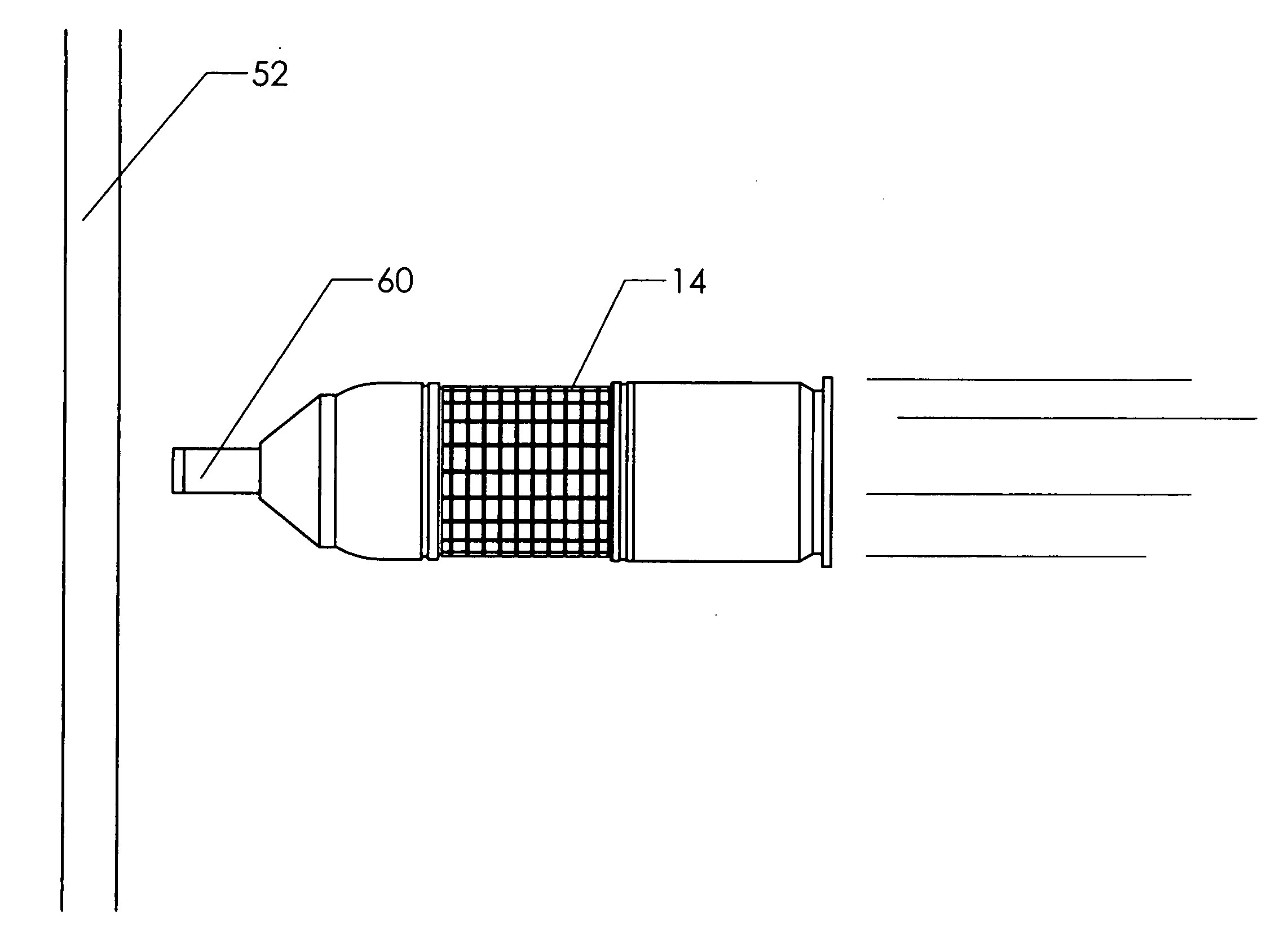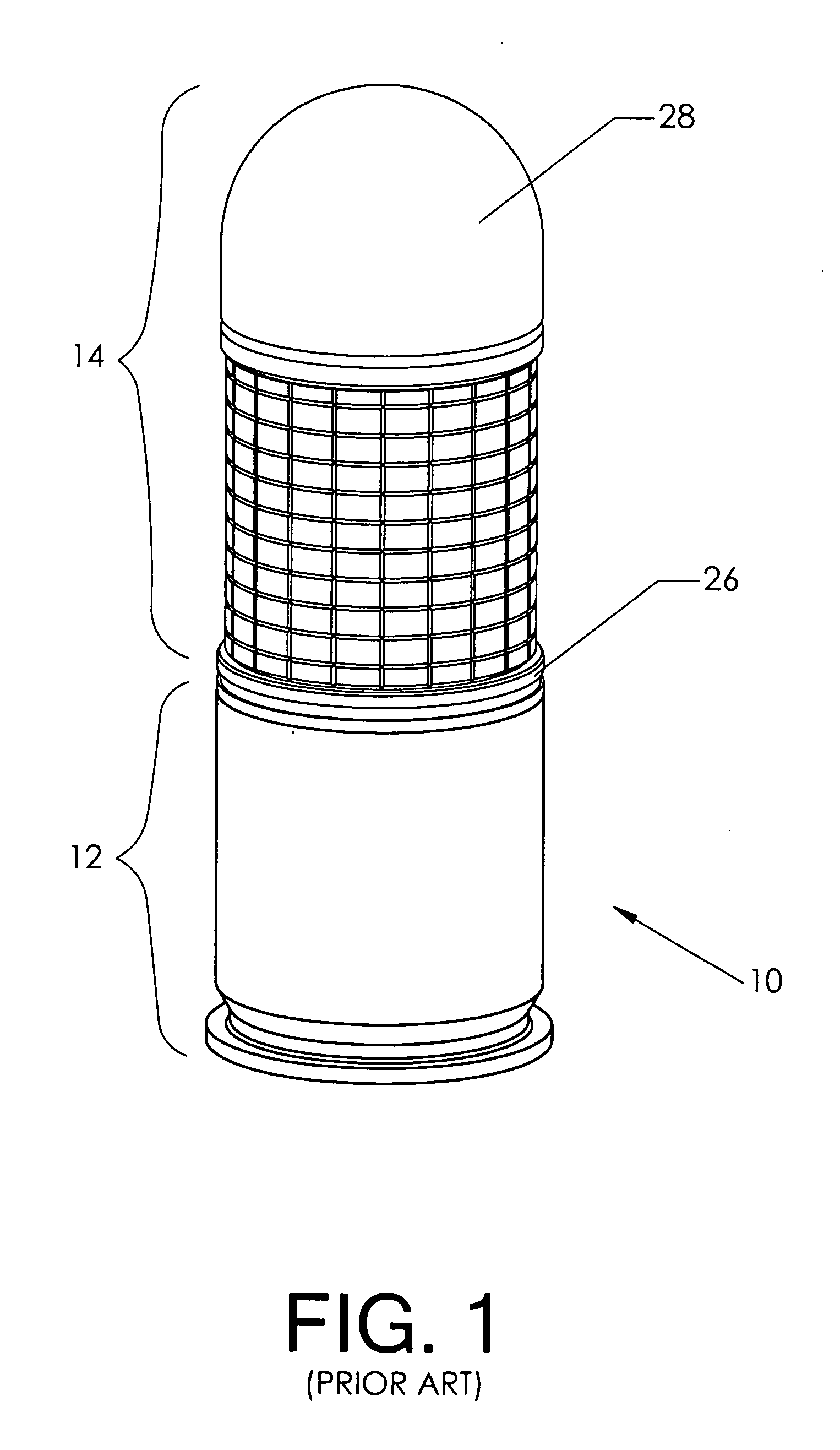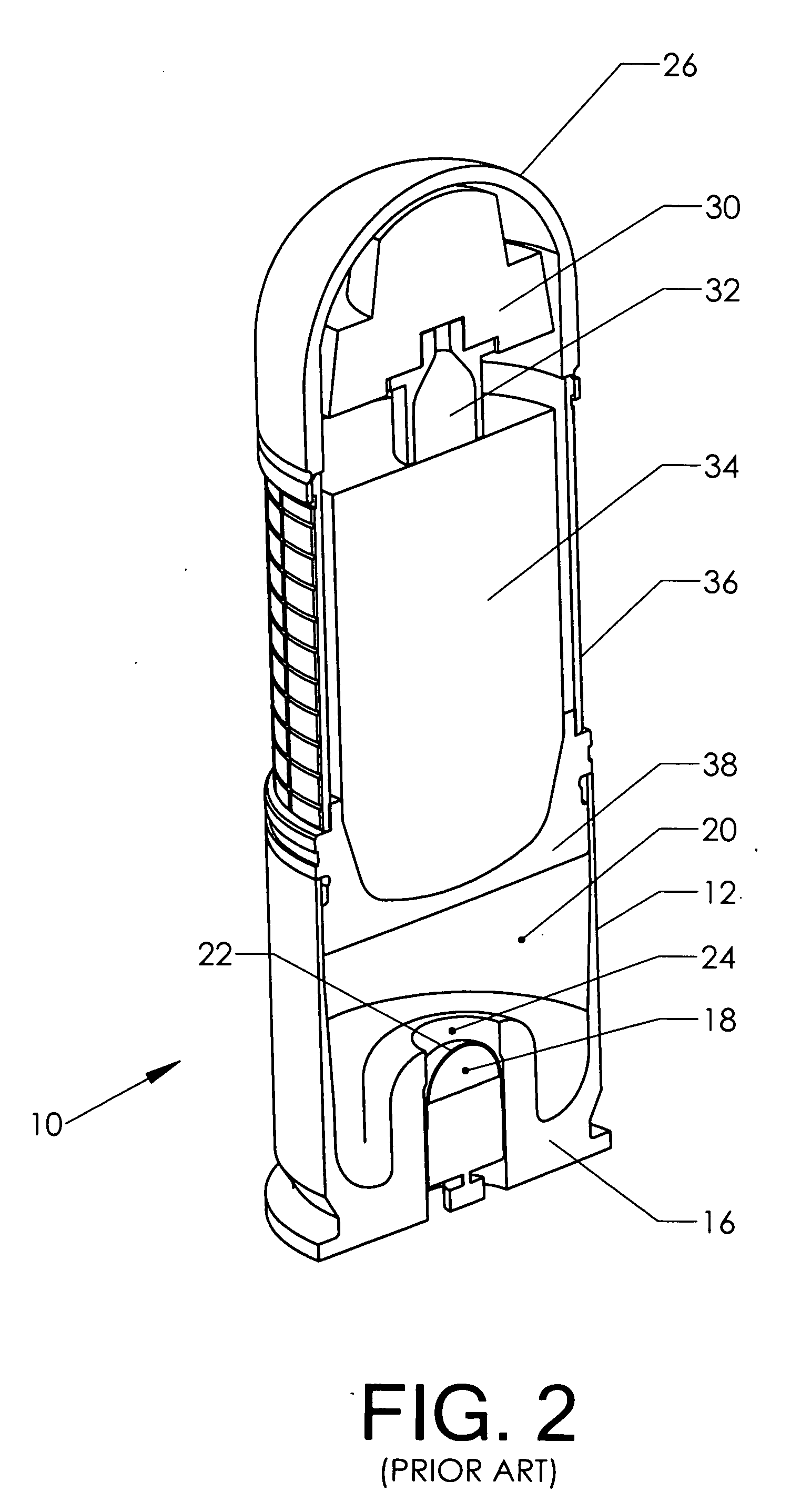Door breaching projectile system
a projectile and door technology, applied in the direction of hand grenades, ammunition fuzes, weapons, etc., can solve the problems of size and mass of the projectile, inability to achieve optimal use, and inability to meet the needs of the structure,
- Summary
- Abstract
- Description
- Claims
- Application Information
AI Technical Summary
Benefits of technology
Problems solved by technology
Method used
Image
Examples
Embodiment Construction
[0074]FIG. 9 shows an elevation view of a projectile 14 made according to the present invention (shown in flight toward a target). The projectile has a central axis of symmetry, about which it spins during flight. The reader will observe that standoff device 60 has been added to the projectile's forward portion along this central axis. The standoff device contacts door 52 and transmits a sharp deceleration to the projectile, causing it to explode. When compared to the prior art projectile's detonation upon contact between the ogive and the door, the detonation in the present case can be said to be “early.” The early detonation is advantageous in certain circumstances—as will be seen.
[0075]FIG. 10 shows the detonation of the projectile by operation of standoff device 60. Explosion 58 has occurred while the majority of the projectile remains outside the door. The resulting blast pressure wave propels the door inward. Flying debris 56 remains primarily outside the door. Thus, the proje...
PUM
 Login to View More
Login to View More Abstract
Description
Claims
Application Information
 Login to View More
Login to View More - R&D
- Intellectual Property
- Life Sciences
- Materials
- Tech Scout
- Unparalleled Data Quality
- Higher Quality Content
- 60% Fewer Hallucinations
Browse by: Latest US Patents, China's latest patents, Technical Efficacy Thesaurus, Application Domain, Technology Topic, Popular Technical Reports.
© 2025 PatSnap. All rights reserved.Legal|Privacy policy|Modern Slavery Act Transparency Statement|Sitemap|About US| Contact US: help@patsnap.com



